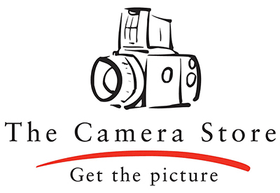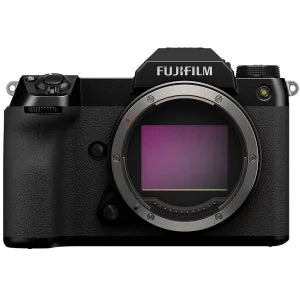Landscape photography is by far our customer’s favourite type of photography. Because of this, we get a lot of people asking what cameras are the best for landscape photography at different budgets. Luckily, Dave did a TCSTV Episode on exactly that, The Best Camera for Landscape Photography at 3 Budget Levels! Now we can help you find the perfect camera for landscape photography at the budget that’s best for you!

First on Dave’s list is the budget-friendly Canon EOS R50, coming in at just over a thousand dollars. One of Canon’s newer cameras, it really packs a punch despite its smaller sensor size and gives the user the ability to shoot all kinds of photography styles, especially landscape. Exceptionally user-friendly with an intuitive, easy-to-use design and full-automatic mode, it’s perfect for first-time photographers. It also can go full manual or anywhere in between for flexibility. The R50 has a crop sensor, so it’s a little smaller and will affect the dynamic range. In addition to a slightly smaller battery, a decent viewfinder and an articulating screen, the R50 is overall an excellently priced camera for landscape photography.

The next step up on Dave’s list is the Nikon Z7 II, a fantastic option for landscape photography. Fully weather-sealed, you won’t have to stress about accidentally getting caught in the rain or dropping the camera in the snow on your landscape adventures. It is substantially larger than the R50 and does weigh more, however, it has a better-quality electronic viewfinder, a higher-resolution screen and a larger battery. At the heart of this camera is a 46-megapixel, full-frame sensor, giving it better low-light performance and broader dynamic range, giving the user the ability to capture light and dark in a single image. The Z7 II is a decent step up price-wise, at $4,799 for the 24-70mm kit, but Dave says it is well worth it for what the Z7 II can achieve both for landscape photography as well as other types of photography.

The third camera Dave chose, which would be his big splurge if he won the lottery, is the Fujifilm GFX 100S. Now, this camera doesn’t come as a kit, so Dave would recommend pairing it with the Fujifilm GF 20-35mm f4 R WR, which brings the total to about $11,000 but is a fantastic combination for landscape photography. The resolution of the camera is incredible, with Dave saying he can aggressively crop and zoom into the details with no issue. But what really makes this camera shine for landscape photography and is the best of all three cameras, is the dynamic range. Dave also loves that it is a medium format camera, so it has a larger sensor than a full-frame camera which gives it a different aesthetic to the image. It is definitely on the top end of Dave’s list for landscape photography and price for a variety of reasons.

The last thing Dave looked at is how these three cameras compare to each other, specifically looking at the resolution and dynamic range. Dave set up all three cameras to photograph one scene and compared the results. First comparing resolution, the Canon EOS R50 has a 24-megapixel sensor, the Nikon Z7 II has a 46-megapixel sensor, and the Fujifilm GFX 100S has a 100-megapixel sensor. As expected, the R50 produced a great image, however, there is a difference in detail when you look at the Z7 II and even more so with the GFX 100S. If you are planning to post your images on social media, the difference in resolution won’t make a huge difference, however, the higher resolution cameras allow you to crop without losing detail and quality that you can still print.

Then there is the dynamic range and how these cameras can handle the exposure. Dave’s set-up was the perfect experiment with a great combination of shade from the trees and direct sun on the hillside. Similarly to the results of the resolution test, the R50 has the lowest dynamic range and was the most limiting of the three cameras, while the GFX 100S has the highest dynamic range and performed the best, with the Z7 II finding a happy place in between.
Overall, of Dave’s picks, the Canon EOS R50 is the best bang for your buck and an excellent option for those just starting in photography. Then the Nikon Z7 II is where you jump into better image quality with higher resolution and dynamic range. Then finally, the Fujifilm GFX 100S with the Fujifilm GF 20-35mm f4 R WR for those who want the most gorgeous combination money can buy.
Watch TCSTV’s Best Camera for Landscape Photography at 3 Budget Levels below to see which camera would be best for you!
Featured in this blog:







